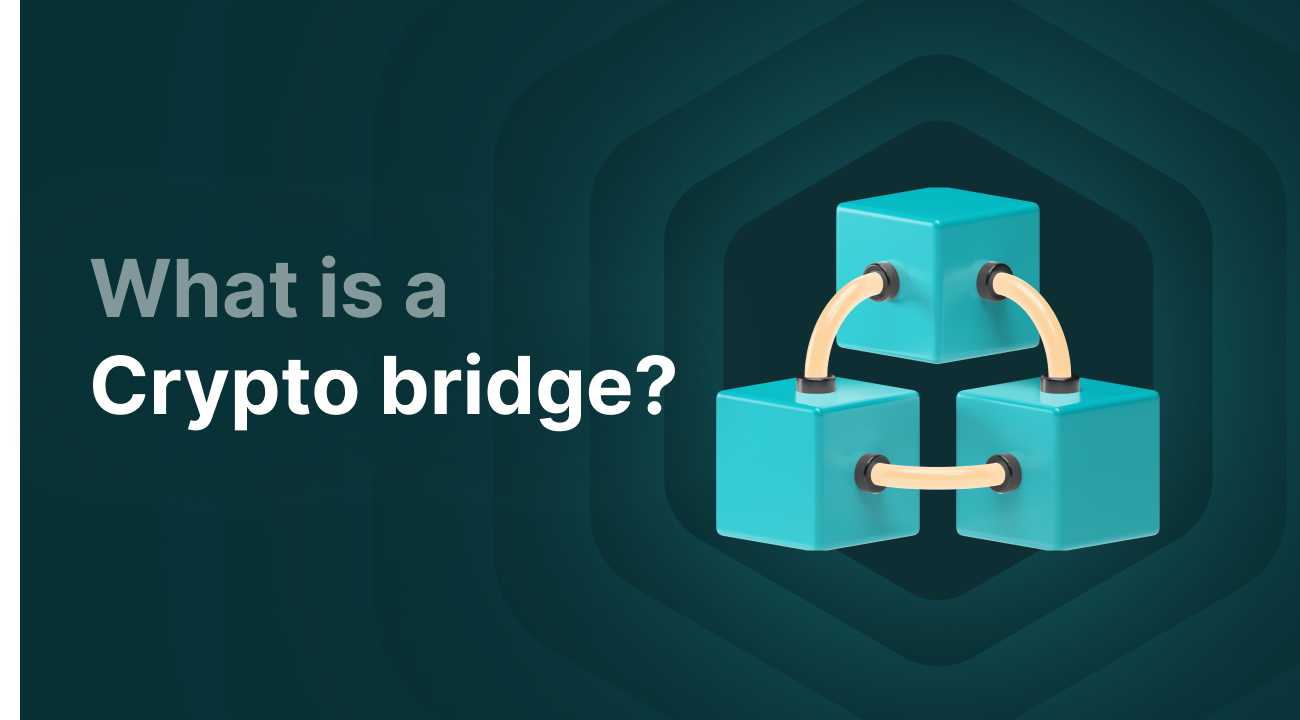What Is a Crypto Bridge and How Does It Work?

What Is a Crypto Bridge?
A crypto bridge enables the transfer of cryptocurrencies (digital assets) and NFTs to other blockchain networks. Crypto bridges were created because blockchains typically can’t communicate with each other directly. This means you can’t simply trade Solana tokens for Ethereum tokens, for example. A crypto bridge acts as a "middleman," enhancing network interoperability.
"Crypto bridge" is a general term, though "cross chain bridge" is also commonly used. Fundamentally, they operate in a similar way, although they refer to slightly different applications. When we talk about a crypto bridge, it usually refers to a bridge that allows Ethereum tokens to move to other networks within the Ethereum ecosystem, such as Layer 1 and Layer 2 networks like Arbitrum and Optimism.
When referring to a cross chain bridge, you're typically talking about a bridge that moves crypto assets between different blockchain ecosystems (for example, from Ethereum to Solana).
Key Takeaways
- Crypto bridges allow for the transfer of digital assets (such as tokens and NFTs) between different blockchains.
- There are different types of bridges:
- Trusted bridges: managed by a centralized party, user-friendly but less decentralized.
- Trustless bridges: run on smart contracts or validator networks, more decentralized but technically complex.
- Hybrid bridges: combine centralized and decentralized components.
- Many bridges use wrapped tokens, where original assets are locked and a representation is minted on the destination chain.
- Crypto bridges are attractive targets for hackers due to vulnerabilities in smart contracts or multisig systems (e.g., the Ronin Bridge hack in 2022).
- Understanding how they work, their costs, and the associated risks is crucial for safe usage.
Trusted vs. Trustless Bridges
The most common crypto bridges are trusted and trustless bridges, with hybrid models also existing. Here's an overview of the different types:
- Trusted bridges: Managed by a centralized third party. These bridges are often user-friendly but require trust in the operator. An example is the Binance Bridge, which is managed by Binance.
- Trustless bridges: These use smart contracts and/or independent validator networks and operate in a fully decentralized way. Users are responsible for their transactions, and trust must be placed in the smart contracts, which must be watertight to prevent exploitation. A good example is Cosmos IBC (Inter-Blockchain Communication), a native protocol within the Cosmos ecosystem that enables secure, direct communication between independent blockchains without a central party.
- Hybrid bridges: These combine aspects of both trusted and trustless models. An example is the Polygon PoS Bridge, which uses a centralized element (like a checkpoint via the Ethereum RootChain) along with its own validator network on the destination blockchain. This setup offers a balance between usability, scalability, and a certain degree of decentralization.
How Does a Crypto Bridge Work?
Crypto bridges enable the transfer of digital assets to another blockchain that normally has no direct connection. For example, you can transfer ERC-20 tokens from Ethereum to the Polygon network. While technical implementation may vary, the process typically includes the following steps:
-
Locking assets on the original blockchain
The user sends tokens to the bridge, where they’re locked on the source blockchain (e.g., Ethereum). This locking happens via a smart contract or a managed crypto wallet. -
Validation and inter-chain communication
Depending on the bridge type, the locking is detected by a centralized operator (trusted bridge), a validator network (trustless bridge), or a hybrid system (like the Polygon PoS Bridge). The information is then relayed to the destination blockchain through a cross-chain communication method, such as oracles, multisig systems, bridge-specific messaging protocols, or a combination of these. -
Minting of Wrapped Tokens on the Destination Blockchain
Once the lock is confirmed by the validator or operator, wrapped tokens are often created on the destination blockchain through a process known as minting. These are assets that follow the underlying value of the original ones. A good example is Wrapped Bitcoin (WBTC). However, this isn’t always the case—some tokens remain the same on the destination blockchain. This is common with tokens built using the Cosmos IBC system, which are often interoperable with other networks in the Cosmos ecosystem. -
Burn and release when swapping back
Wrapped tokens can be swapped back for the original tokens. After validation, the wrapped tokens are burned (destroyed), and the original tokens are released back on the source blockchain. "Burning" means the tokens are permanently removed from circulation.
Transaction Costs in Bridge Transfers
All bridge transactions involve transaction fees. The amount depends on the blockchains involved. Typically, Gas Fees are paid on the source chain. If wrapped tokens are minted or released, a fee is also charged on the receiving chain. Additionally, some bridges charge a protocol fee, which is often used to reward validators, operators, or to maintain the infrastructure.
Wrapped Tokens and Liquidity Pools
Many bridges use wrapped tokens, like Wrapped Ethereum (WETH). These tokens represent the value of underlying assets that are locked as collateral on the original blockchain. The locked tokens are safeguarded by validators, multisig wallets, or smart contracts.
This design also makes bridges an attractive target for attacks. Malicious actors can exploit vulnerabilities in smart contracts or poorly secured multisig wallets.
A well-known case is the Ronin Bridge hack in 2022. Hackers gained control over a majority of validator nodes, allowing them to authorize fraudulent withdrawals. More than $600 million in ETH and USDC was stolen.
Some bridges also use liquidity pools. Here, users provide assets on multiple networks to facilitate bridge transfers. In return, they receive rewards for acting as liquidity providers.
Why Were Cross Chain Bridges Created?
Cross chain bridges were developed to make it easier for users to transfer assets between different blockchains. Previously, this wasn’t possible, since blockchains like Bitcoin, Ethereum, Solana, and Avalanche were designed as closed systems with their own protocols, infrastructure, and tokens.
This isolation limited interoperability—an essential feature for the growth of DeFi, NFTs, crypto gaming, and other Web3 applications. Cross chain bridges solve this problem by enabling the exchange of tokens, data, and functionalities across blockchains.
Pros and Cons of Crypto Bridges
Using crypto bridges has several advantages and disadvantages, and it comes with specific risks. Here's an overview:
Final thoughts
Crypto bridges play a crucial role in enhancing interoperability between blockchains. They allow for the safe transfer of digital assets like tokens and NFTs across different networks, enabling new possibilities in DeFi, Web3, and crypto gaming. While they represent significant technological progress, they also come with risks. A solid understanding of how bridges work and the types available is essential for users aiming to engage safely and efficiently with these tools.




